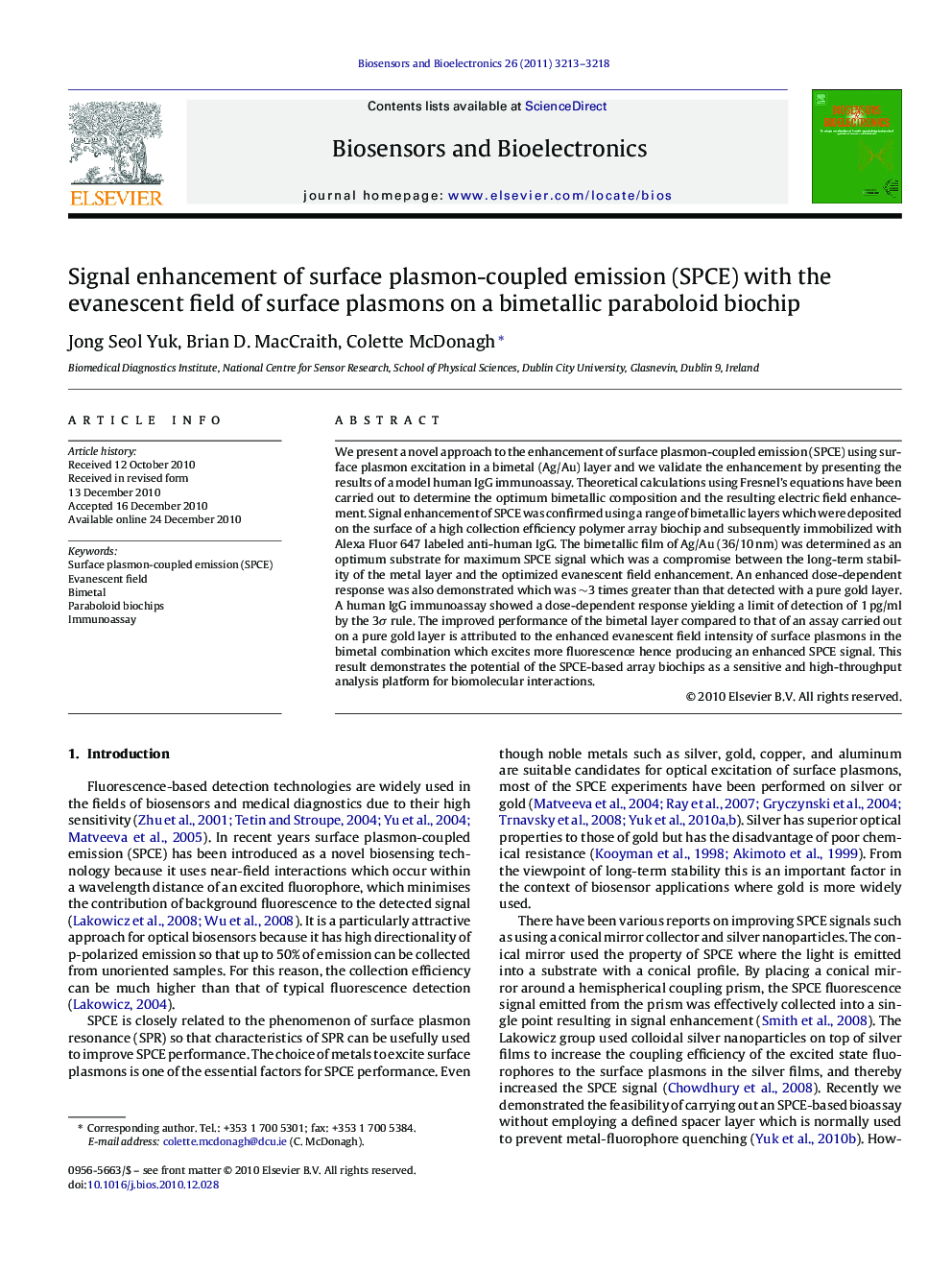| Article ID | Journal | Published Year | Pages | File Type |
|---|---|---|---|---|
| 868501 | Biosensors and Bioelectronics | 2011 | 6 Pages |
We present a novel approach to the enhancement of surface plasmon-coupled emission (SPCE) using surface plasmon excitation in a bimetal (Ag/Au) layer and we validate the enhancement by presenting the results of a model human IgG immunoassay. Theoretical calculations using Fresnel's equations have been carried out to determine the optimum bimetallic composition and the resulting electric field enhancement. Signal enhancement of SPCE was confirmed using a range of bimetallic layers which were deposited on the surface of a high collection efficiency polymer array biochip and subsequently immobilized with Alexa Fluor 647 labeled anti-human IgG. The bimetallic film of Ag/Au (36/10 nm) was determined as an optimum substrate for maximum SPCE signal which was a compromise between the long-term stability of the metal layer and the optimized evanescent field enhancement. An enhanced dose-dependent response was also demonstrated which was ∼3 times greater than that detected with a pure gold layer. A human IgG immunoassay showed a dose-dependent response yielding a limit of detection of 1 pg/ml by the 3σ rule. The improved performance of the bimetal layer compared to that of an assay carried out on a pure gold layer is attributed to the enhanced evanescent field intensity of surface plasmons in the bimetal combination which excites more fluorescence hence producing an enhanced SPCE signal. This result demonstrates the potential of the SPCE-based array biochips as a sensitive and high-throughput analysis platform for biomolecular interactions.
